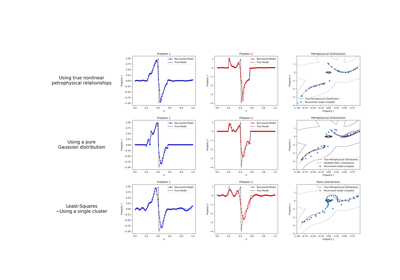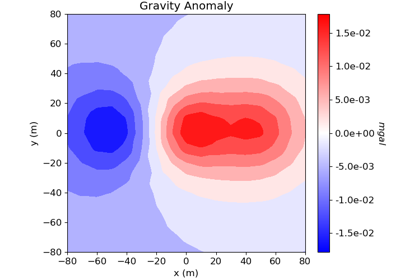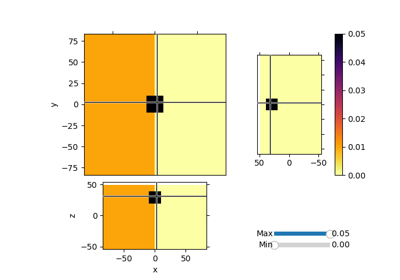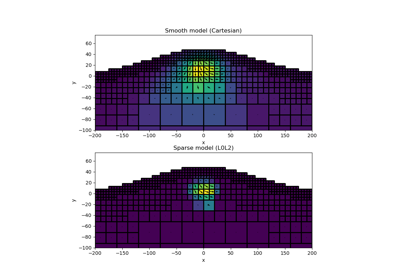simpeg.maps.Wires#
- class simpeg.maps.Wires(*args)[source]#
Bases:
objectMapping class for organizing multiple parameter types into a single model.
Let \(\mathbf{p_1}\) and \(\mathbf{p_2}\) be vectors that contain the parameter values for two different parameter types; for example, electrical conductivity and magnetic permeability. Here, all parameters are organized into a single model \(\mathbf{m}\) of the form:
\[\begin{split}\mathbf{m} = \begin{bmatrix} \mathbf{p_1} \\ \mathbf{p_2} \end{bmatrix}\end{split}\]The
Wiresclass constructs and applies the basic projection mappings for extracting the values of a particular parameter type from the model. For example:\[\mathbf{p_1} = \mathbf{P_{\! 1} m}\]where \(\mathbf{P_1}\) is the projection matrix that extracts parameters \(\mathbf{p_1}\) from the complete set of model parameters \(\mathbf{m}\). Likewise, there is a projection matrix for extracting \(\mathbf{p_2}\). This can be extended to a model that containing more than 2 parameter types.
- Parameters:
- args
tuple Each input argument is a tuple (
str,int) that provides the name and number of parameters for a given parameters type.
- args
Attributes
Number of parameters the mapping acts on.
Examples
Here we construct a wire mapping for a model where there are two parameters types. Note that the number of parameters of each type does not need to be the same.
>>> from simpeg.maps import Wires, ReciprocalMap >>> import numpy as np
>>> p1 = np.r_[4.5, 2.7, 6.9, 7.1, 1.2] >>> p2 = np.r_[10., 2., 5.]**-1 >>> nP1 = len(p1) >>> nP2 = len(p2) >>> m = np.r_[p1, p2] >>> m array([4.5, 2.7, 6.9, 7.1, 1.2, 0.1, 0.5, 0.2])
Here we construct the wire map. The user provides a name and the number of parameters for each type. The name provided becomes the name of the method for constructing the projection mapping.
>>> wire_map = Wires(('name_1', nP1), ('name_2', nP2))
Here, we extract the values for the first parameter type.
>>> wire_map.name_1 * m array([4.5, 2.7, 6.9, 7.1, 1.2])
And here, we extract the values for the second parameter type then apply a reciprocal mapping.
>>> reciprocal_map = ReciprocalMap() >>> reciprocal_map * wire_map.name_2 * m array([10., 2., 5.])
Galleries and Tutorials using simpeg.maps.Wires#

Petrophysically guided inversion: Joint linear example with nonlinear relationships

Cross-gradient Joint Inversion of Gravity and Magnetic Anomaly Data

Joint PGI of Gravity + Magnetic on an Octree mesh using full petrophysical information

Joint PGI of Gravity + Magnetic on an Octree mesh without petrophysical information






